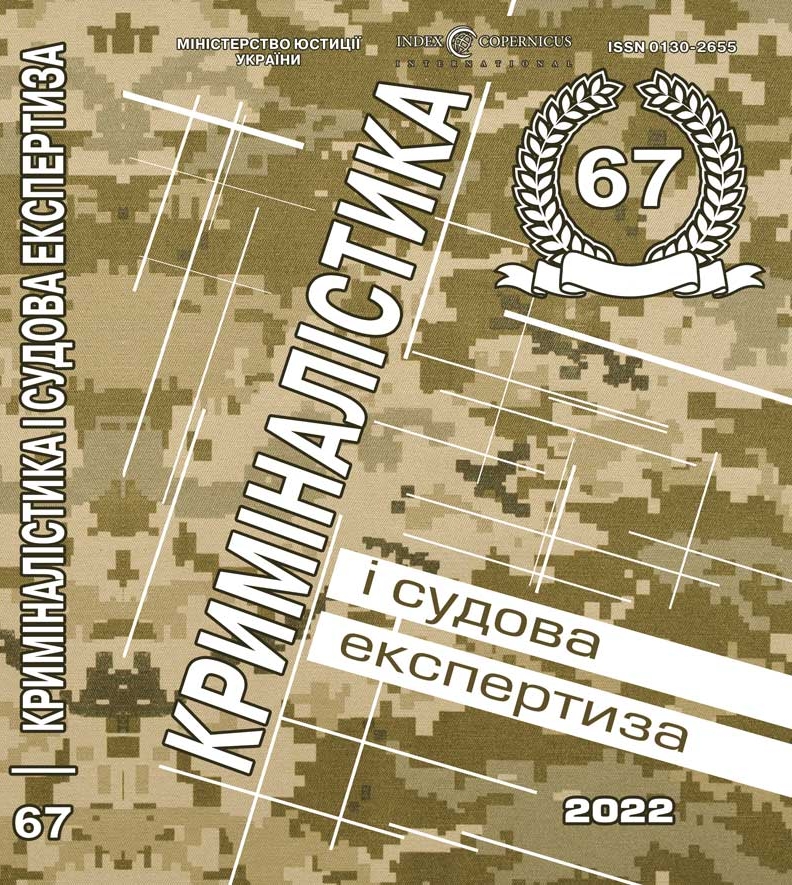
DOI: https://doi.org/10.33994/kndise.2022.67.09
О. Humenskyi
To date, the issues of classification of the tasks of forensic examination are debatable, there are several points of view on the problems covered in the article, and all of them are related to the differentiation of these tasks, that is, ultimately, to the establishment of the boundaries of the methods that are used to solve them.
Classification of expert tasks is conducted on the basis of the “vector of induction of expert tasks” (hereinafter referred to as VIET), which is directed from the most “private” task of establishment of individual identity to the most universal task of establishing causative connections of the explored objects and phenomena with the purpose of establishment of a mechanism of an incident; as well as from the establishment of particular features of an individual object, as the basis for achieving the goal of the study, to the determination of the maximum possible set of all features and properties of several studied objects and their relationships.
The division of tasks of judicial examinations based on VIET enables their “correct” classification, in that sense, that vector is those “rule”, by which monosemantic classification of tasks is real depending on their position on the scale of this vector and, as a result, monosemantic attributing of any concrete expert task to the certain kind.
Certain by us: 1) multitude set of identification tasks with a subset of group identification of the first type; 2) classification tasks; 3) group identification of second type (classification and diagnostic tasks); 4) diagnostic (with a subset of causally-diagnostic); 5) situational tasks of forensic examination.
The following definitions have been adopted.
Identification is the process of establishing (excluding) the identity of the identified and identifying objects by a combination of general features. Considering the influence of the ratio of general and features when making a decision about identity, we dwell on the position that identification can be individual and group.
Expert diagnostics is a scientific method of cognition, the essence of which is to recognize the typical state of the diagnosed object, as well as the presence or absence of a deviation from the norm.
Classification is the assignment of an object to one of the established classification groups. The group, judging from the above definition, must be strictly defined.
Classification can be based on groups of different degrees of generality, but it does
not cease to be a classification.
Situational examination – a type of examination that establishes the mechanism of an incident in its tracks, objects, and environment and is implemented as part of comprehensive studies.
Key words: classification of tasks of forensic examinations, vector of induction of expert tasks, identification, classification, group identification of second type, diagnostics, situational tasks.










